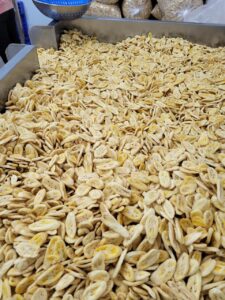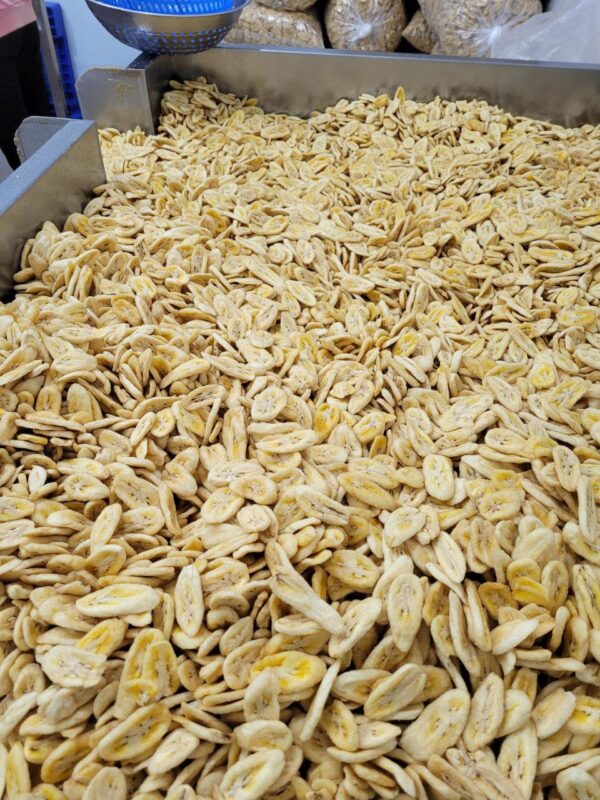Last updated on May 19th, 2025 at 04:54 am
Introduction
Importing bulk dried papaya involves more than finding a reliable supplier; logistics, lead times, and correct Incoterms significantly impact the success of your shipment. According to UNCTAD, logistics account for about 12%–15% of total product cost in international trade. Understanding these elements ensures your dried papaya cargo arrives on time, in perfect condition, and at the right cost. This guide provides a comprehensive overview specifically for buyers looking to import bulk dried papaya from Vietnam.
Explore OEM/ODM dried papaya sourcing options.

Typical Lead Times for Bulk Dried Papaya Orders
Lead time is the period from order confirmation to shipment readiness. For dried papaya exports from Vietnam:
| Order Quantity | Production Lead Time | Additional Export Handling |
|---|---|---|
| <5 tons | 10–15 business days | 3–5 business days |
| 5–10 tons | 15–20 business days | 5–7 business days |
| >10 tons | 20–30 business days | 7–10 business days |
Factors affecting lead times:
- Order size: Larger orders require longer drying and processing cycles.
- Seasonality: Peak harvest months (May–September) offer faster turnaround.
- Custom requirements: OEM/private label packaging may add 5–7 days.
For orders requiring special moisture or sugar levels, confirm lead times with your supplier upfront.
Learn about sourcing high-quality dried papaya.
Understanding Incoterms for Dried Papaya Imports
Incoterms (International Commercial Terms) define buyer and seller responsibilities in cross-border transactions. For dried papaya shipments from Vietnam, the most common Incoterms are:
| Incoterm | Buyer Responsibility | Seller Responsibility | Best For |
|---|---|---|---|
| FOB (Free on Board) | Shipping, insurance after goods are on vessel | Local transport, export customs, loading on vessel | Experienced importers |
| CIF (Cost, Insurance, Freight) | Customs clearance, inland transport | Ocean freight, insurance to destination port | Newer importers |
| EXW (Ex Works) | Full logistics from factory gate | Goods ready at factory | Buyers with local agents |
For bulk dried papaya, FOB and CIF are most popular because they balance control and simplicity.
Understand more about importing large quantities of dried papaya.
Best Shipping Options for Bulk Dried Papaya
Choosing the correct shipping mode ensures the dried papaya maintains its quality upon arrival.
1. Sea Freight (Most Recommended)
- Ideal for: Bulk orders over 1 ton.
- Container Size: 20-ft container (~12–13 tons) or 40-ft container (~25–27 tons).
- Transit Time: 20–40 days depending on destination.
Advantages:
- Cost-effective for high volumes.
- Controlled temperature options available (e.g., ventilated containers).
For better shelf-life management, understand dried papaya storage tips.
2. Air Freight
- Ideal for: Small urgent orders <1 ton.
- Transit Time: 3–7 days.
Advantages:
- Fast delivery.
- Suitable for premium or perishable orders.
However, air freight costs are typically 5x–7x higher than sea freight, so it’s mainly used for high-value or urgent shipments.
Discover nutritional benefits of dried papaya for your product line.
How to Optimize Lead Times and Shipping Costs
Tips to streamline your import process:
- Consolidate Orders: Instead of small repeated orders, one larger shipment reduces per-unit logistics costs.
- Book Early: During holiday seasons (e.g., Christmas, Tet), vessel space tightens, so book 4–6 weeks in advance.
- Negotiate Incoterms: FOB is usually more cost-effective if you have a trusted freight forwarder.
- Check Port Options: Use Vietnam’s major ports (e.g., Cat Lai, Hai Phong) for faster customs clearance.
For OEM/private label needs, check soft dried papaya supplier services.
Sample Lead Time and Shipping Timeline Overview
| Step | Duration | Notes |
|---|---|---|
| Order Confirmation | Day 0 | Signed Proforma Invoice |
| Production and Packing | Day 1–20 | Varies based on order size |
| Export Documentation | Day 21–26 | Certificate of Origin, Phytosanitary Certificate |
| Vessel Booking and Loading | Day 27–30 | Depends on shipping schedule |
| Sea Transit | 20–40 days | Port-to-port shipping time |
Learn more about how dried papaya is prepared for export.
Conclusion
Managing lead times, selecting appropriate Incoterms, and choosing the right shipping option are vital steps for importing bulk dried papaya efficiently. Proper planning ensures timely delivery, preserves product quality, and optimizes your import budget.
Conclusion:
If you want to import bulk dried papaya from Vietnam with private label or custom branding, partnering with an experienced OEM/ODM manufacturer is the key. For inquiries about importing high-quality dried papaya, contact Qualitex Global.
FAQ Section
What is the average lead time for bulk dried papaya orders?
Typically, production and export preparation take 20–30 business days, depending on quantity and season.
Which Incoterm is most recommended for importing dried papaya?
FOB (Free on Board) and CIF (Cost, Insurance, Freight) are the most commonly used and recommended for dried fruit imports.
How much dried papaya fits into a 20-foot container?
A 20-ft container can typically hold around 12–13 tons of dried papaya, depending on packaging.
Is air freight a good option for dried papaya imports?
Air freight is ideal for small, urgent orders but significantly more expensive than sea freight.
Can I use custom packaging for my dried papaya bulk order?
Yes, suppliers like Qualitex Global offer OEM/ODM packaging services tailored to client requirements.









